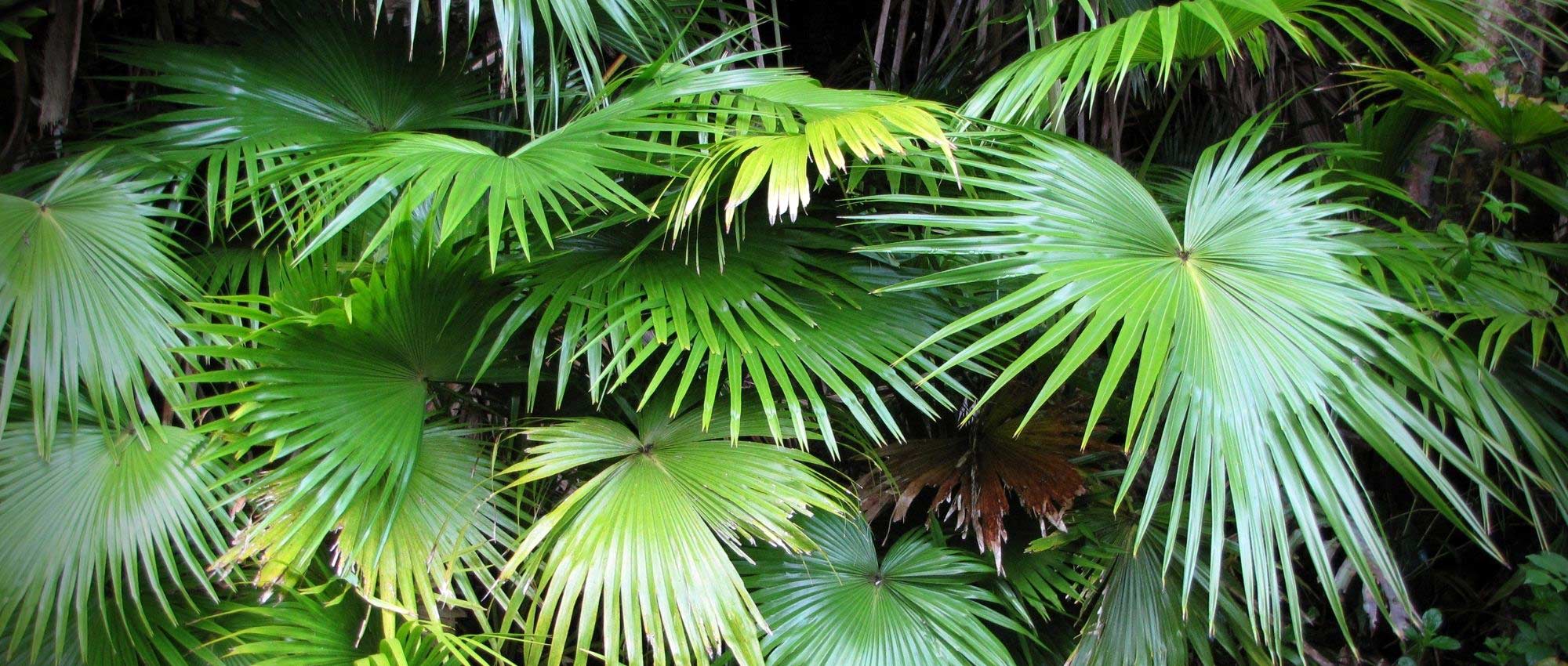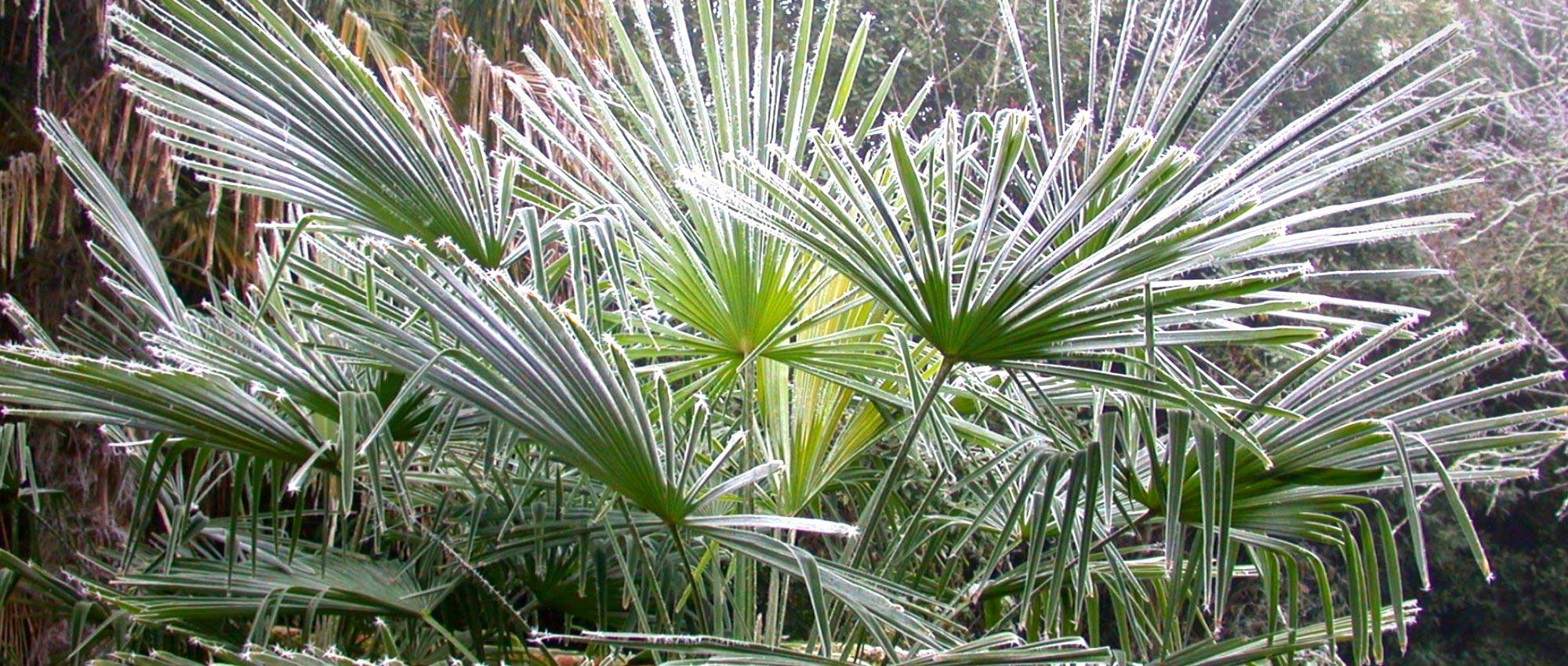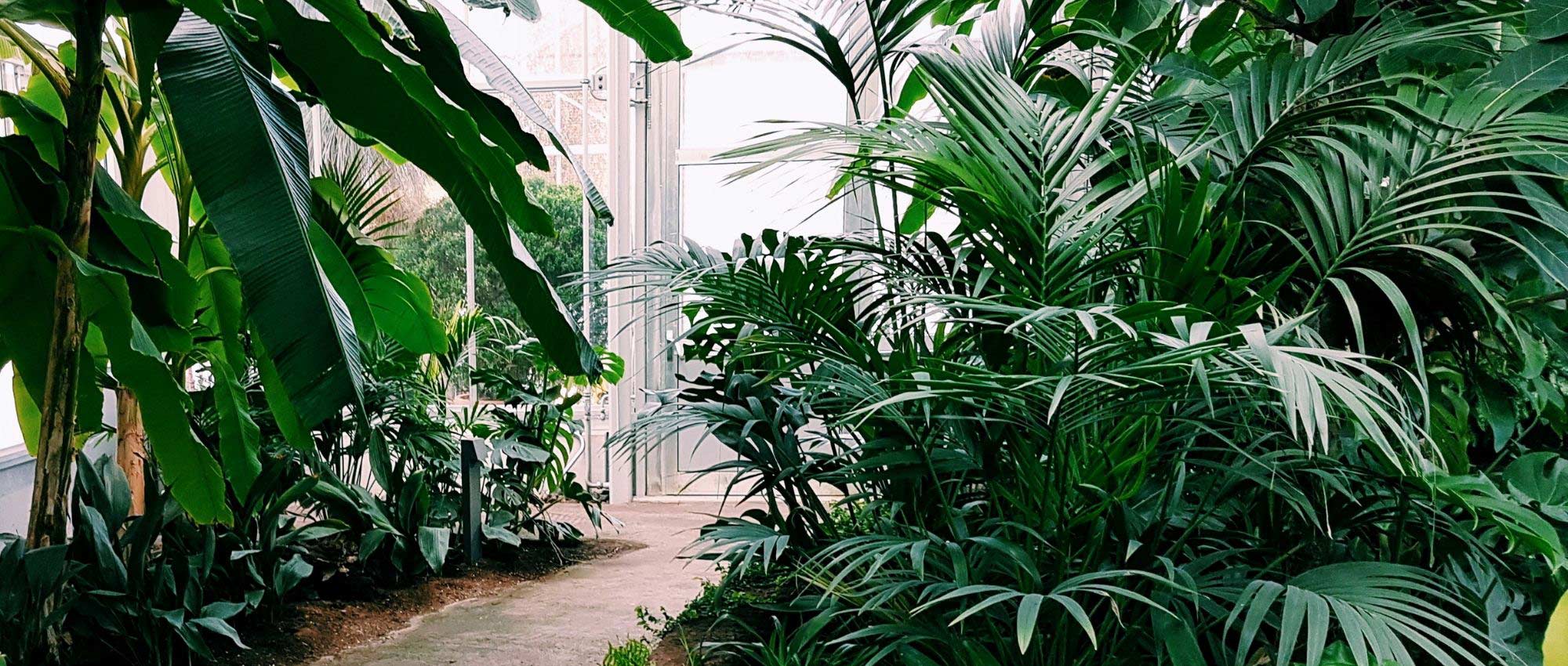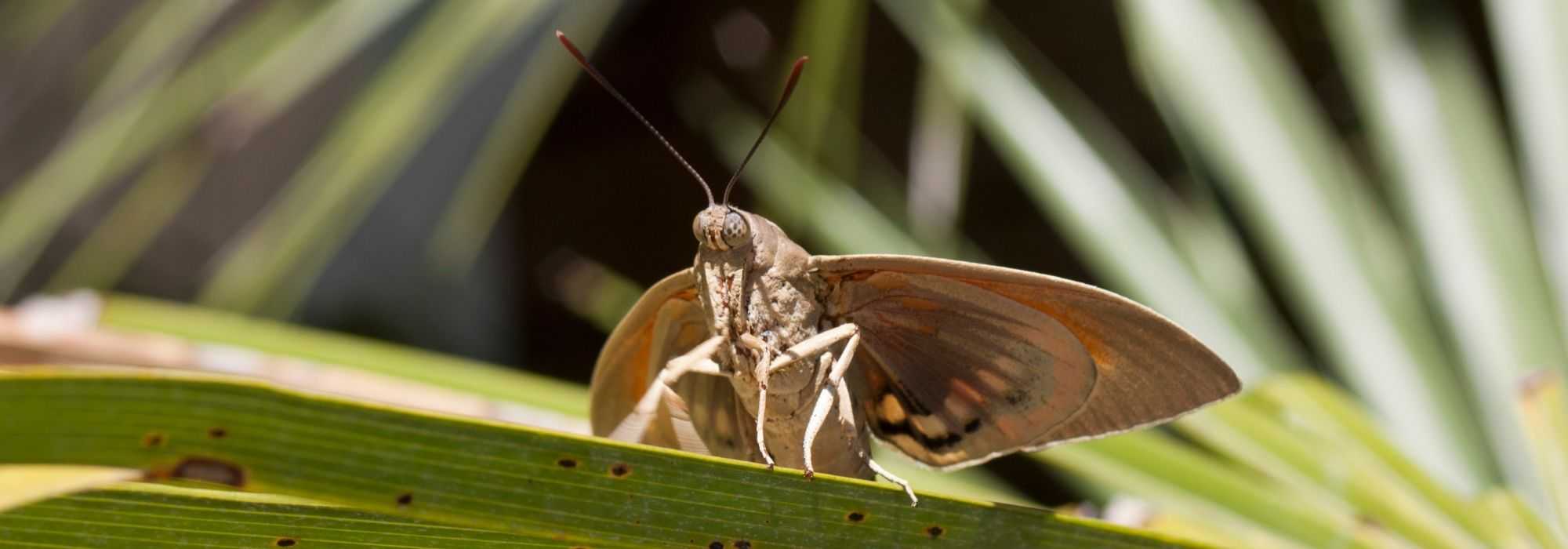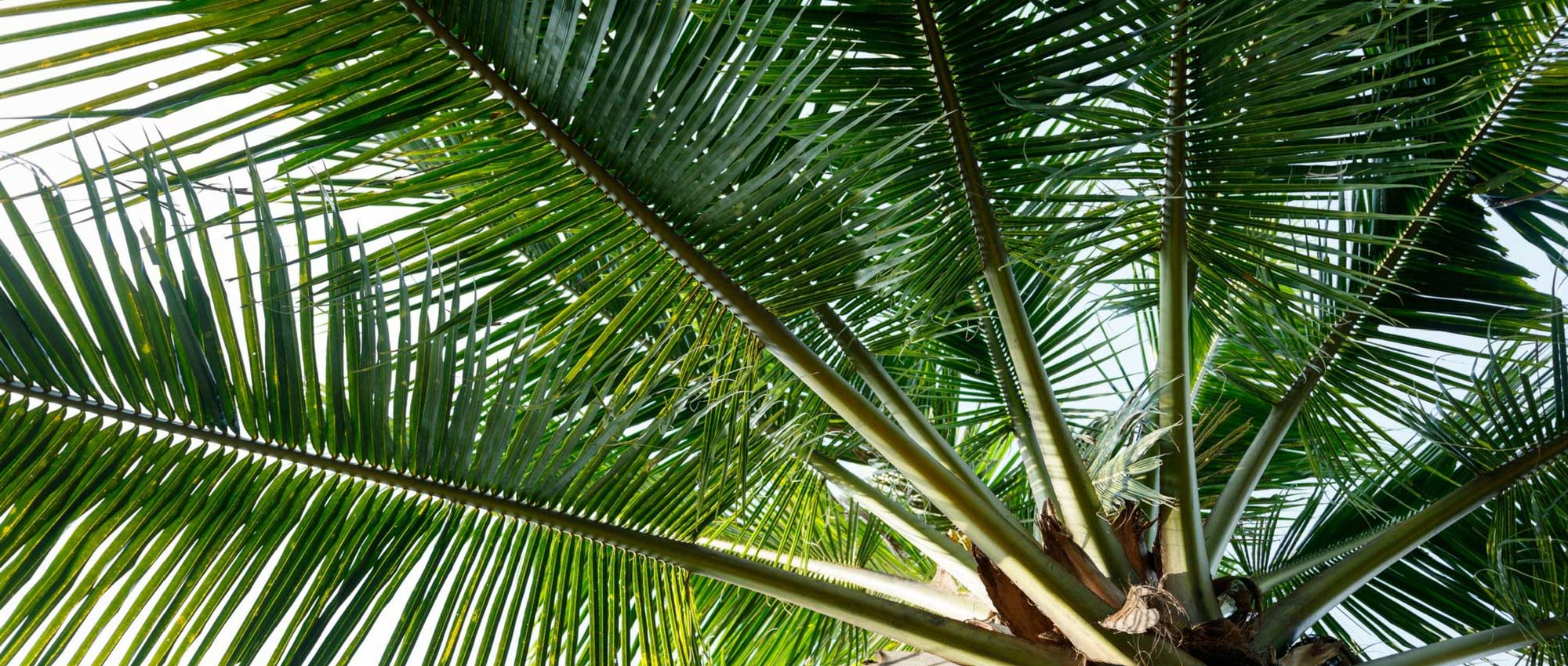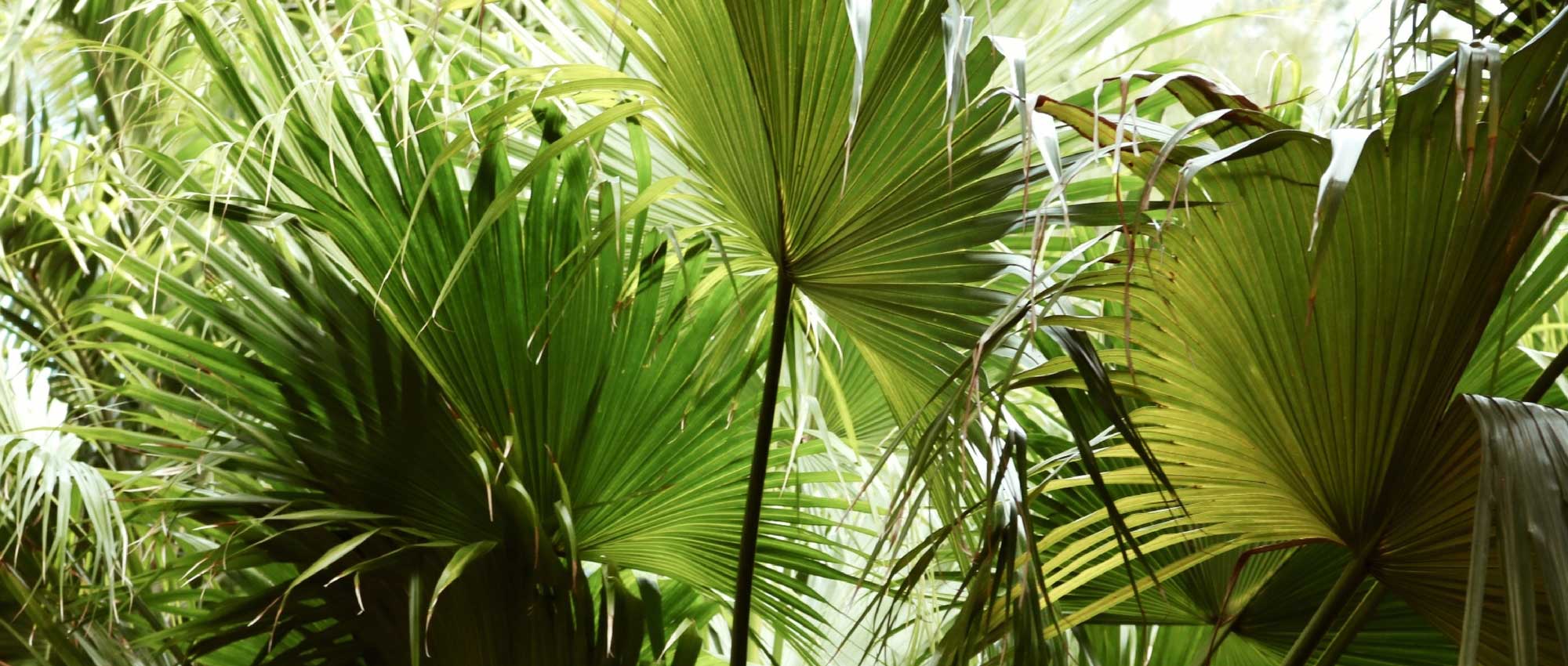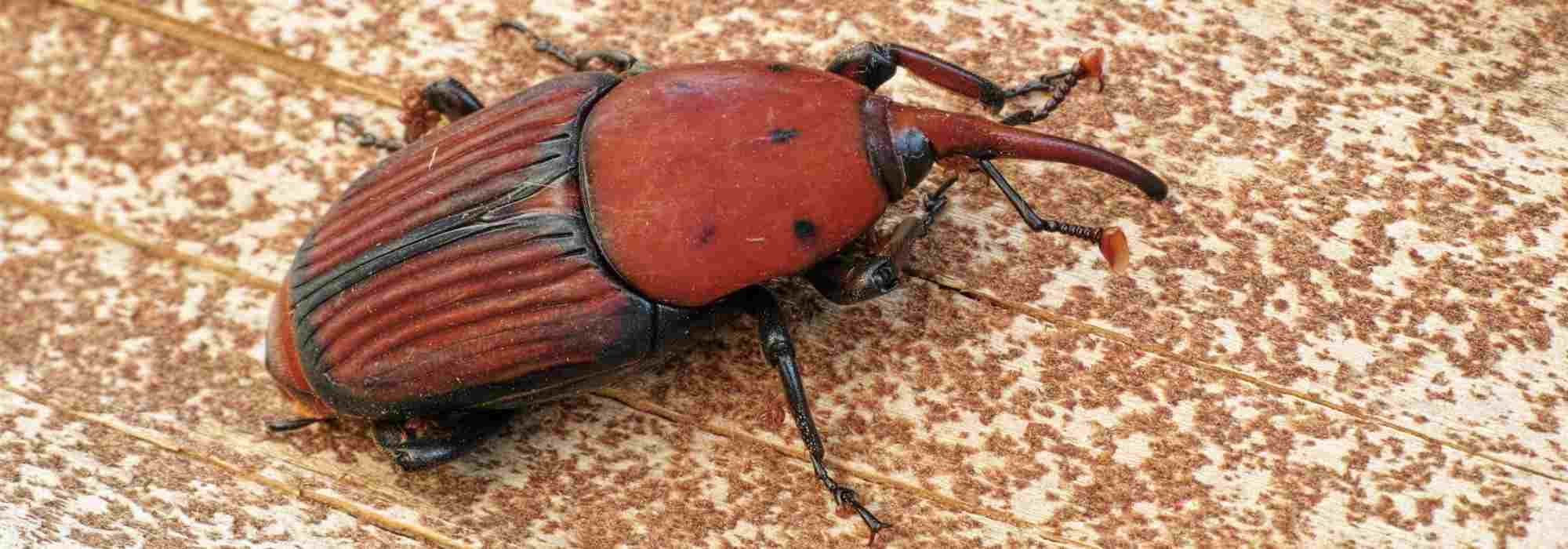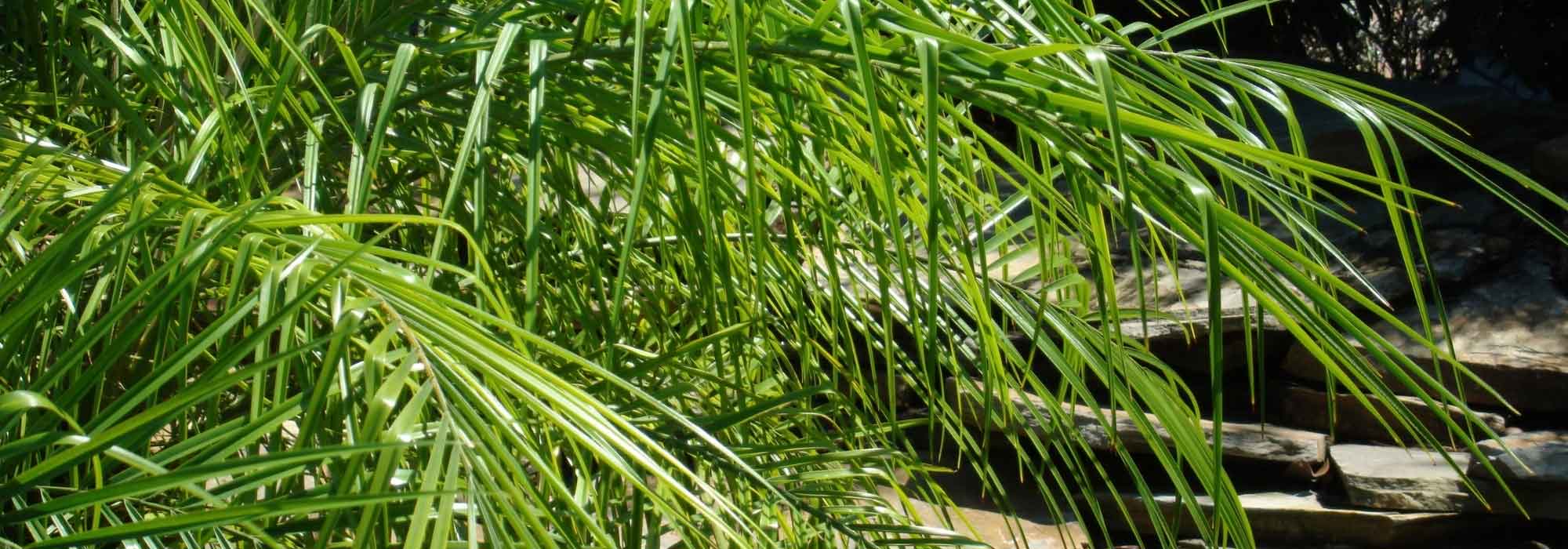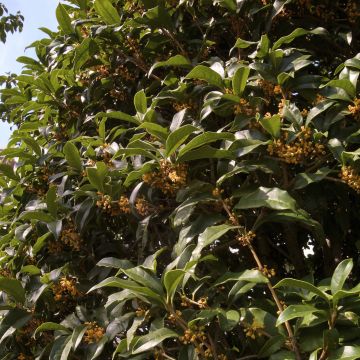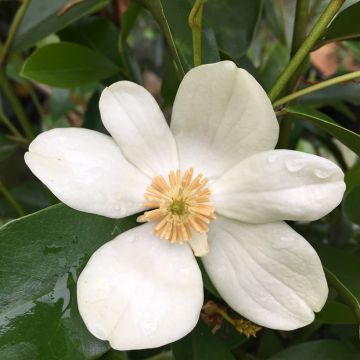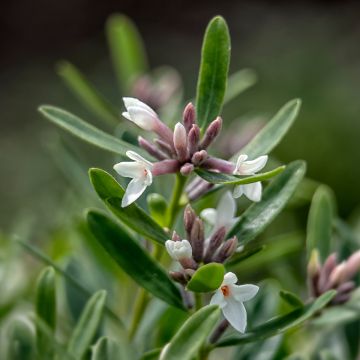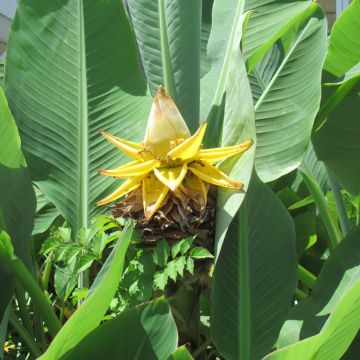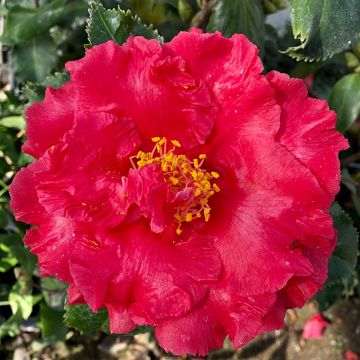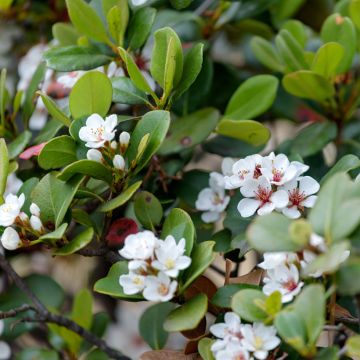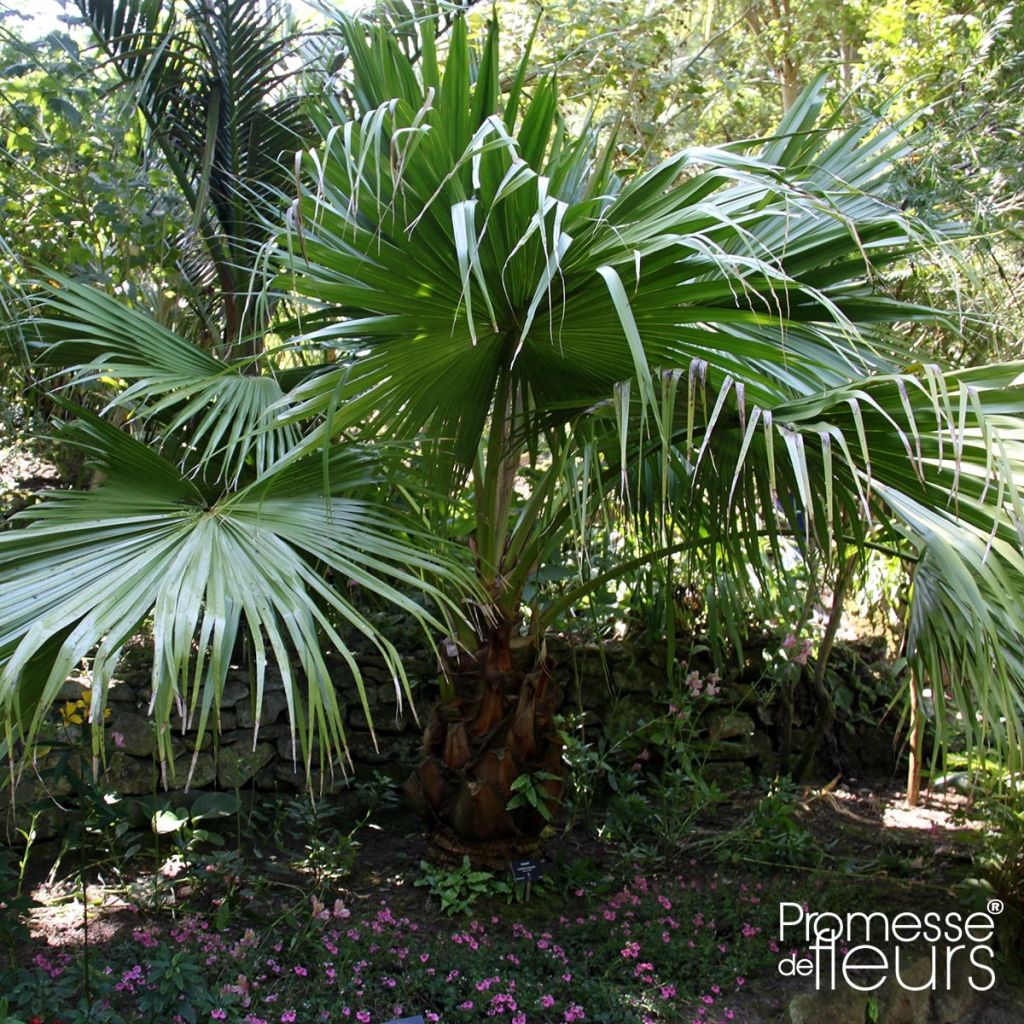

Livistona chinensis - Palmier éventail japonais
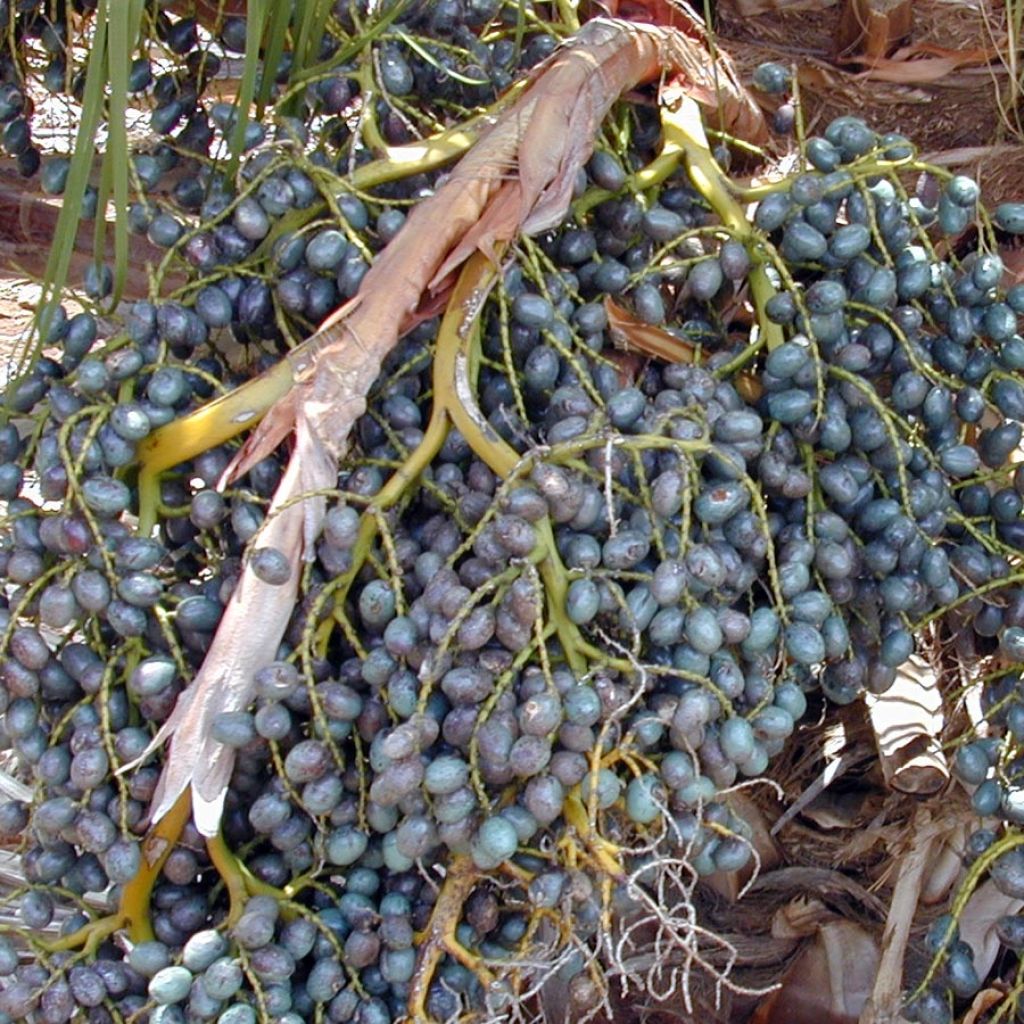

Livistona chinensis - Palmier éventail japonais
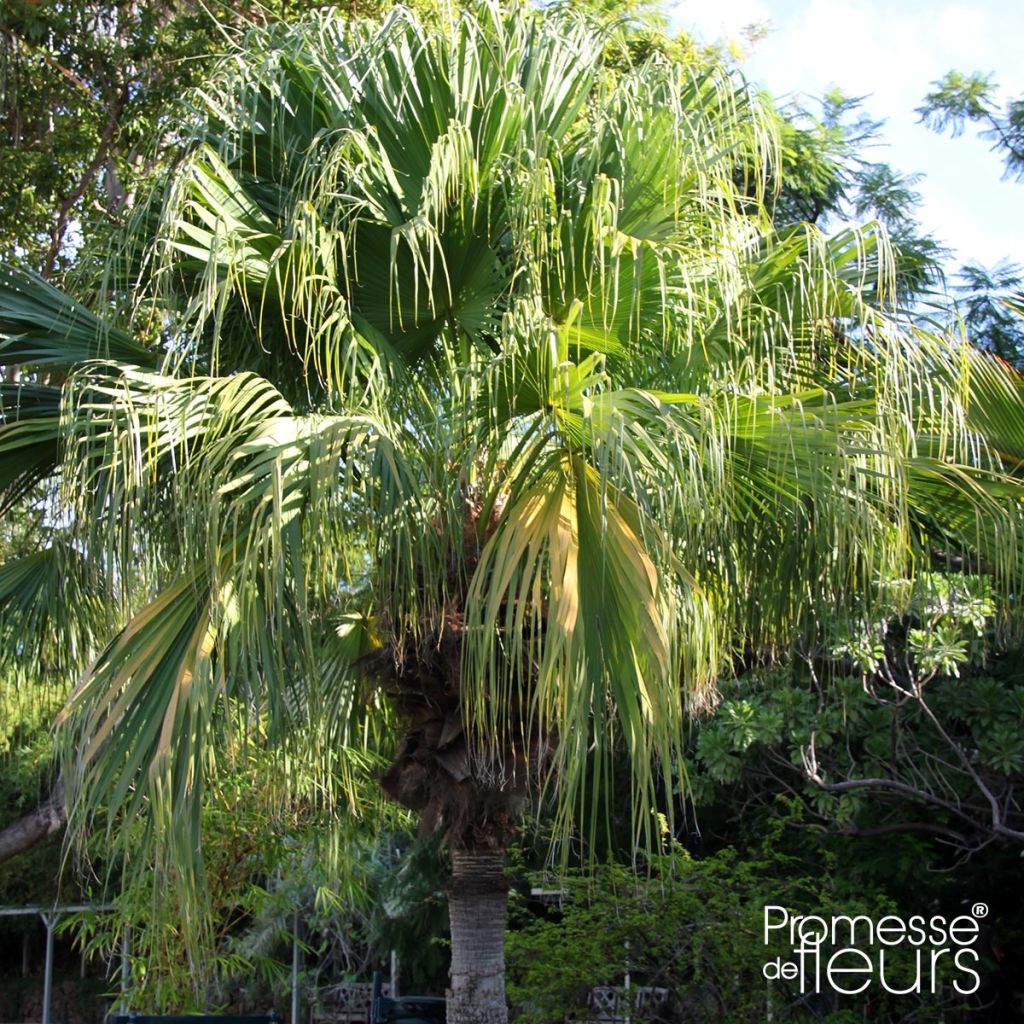

Livistona chinensis - Palmier éventail japonais
Livistona chinensis - Chinese Fan Palm
Livistona chinensis
Chinese Fan Palm, Fountain Palm
10L pot. Beautiful, well-developed specimen. I had been looking for this palm tree at a reasonable price for a while. I'm absolutely delighted.
Anaïs , 24/09/2022
Special offer!
Receive a €20 voucher for any order over €90 (excluding delivery costs, credit notes, and plastic-free options)!
1- Add your favorite plants to your cart.
2- Once you have reached €90, confirm your order (you can even choose the delivery date!).
3- As soon as your order is shipped, you will receive an email containing your voucher code, valid for 3 months (90 days).
Your voucher is unique and can only be used once, for any order with a minimum value of €20, excluding delivery costs.
Can be combined with other current offers, non-divisible and non-refundable.
Home or relay delivery (depending on size and destination)
Schedule delivery date,
and select date in basket
This plant carries a 24 months recovery warranty
More information
We guarantee the quality of our plants for a full growing cycle, and will replace at our expense any plant that fails to recover under normal climatic and planting conditions.
Does this plant fit my garden?
Set up your Plantfit profile →
Description
Livistona chinensis, also known as the Chinese Fan Palm, is one of the most elegant and hardy of this genus, which includes about thirty species native to the warm and humid regions of Australia and Asia. Highly appreciated as an indoor plant or in coastal gardens, it is sought after for its magnificent, fountain-like habit, its lush foliar crown, and the beauty of its large, round, spring-green, trailing palm leaves, reminiscent of large fans. It is a relatively easy plant to grow in a pot as long as it has light and a rich and moist growing medium. It will remain small and will not produce a trunk.
Livistona chinensis, sometimes called the Chinese Fan Palm or Fountain Palm, is native to southern Japan, Taiwan, and southern China. This species requires warmth and water to grow well, and young plants must be protected from frost. Once mature, it can tolerate brief periods of temperatures as low as -8°C (17.6 °F). It is not demanding in terms of soil and appreciates regular watering but can also tolerate moderate drought. Like all palms, it belongs to the Arecaceae family. In its natural habitat, the plant reaches an average height of 15m (49 ft 2 in) with a spread of 7m (23 ft). In climates mild enough to accommodate it in the ground, it will adapt but will remain smaller, reaching a height of about 10m (32 ft 10 in). If grown in a container, it will form a clump of leaves no taller than 1.80m (5 ft 11 in) with a spread of 90cm (35.4 in).
The Chinese Fan Palm has a single, smooth and swollen trunk at the base, with a green-brown colour. At the top of the trunk, a crown composed of large, almost circular, palmate leaves develops, measuring 80cm (31.5 in) to 1.50m (4 ft 11 in) in length, divided into thin and pointed segments, joined at the base. The end of each segment gracefully drapes downwards. The leaves are bright green, glossy on the upper surface and slightly paler underneath. Each leaf is borne on a long, fleshy petiole, sometimes with dark and curved spines. The flowering occurs in summer, in the form of panicles of branched, creamy yellowish flowers. The fruits are generally ovoid, 2 to 3cm (0.8 to 1.2 in) long, and turn bluish when ripe, resembling olives.
The Chinese Fan Palm can be planted in the ground in gardens along the coast, sheltered from the wind, and even inland in the most sheltered areas. It deserves a prominent place, either isolated on a lawn or in front of a large shrubbery that will protect it from strong winds and intense sunlight. When planted in a large pot or container, it forms a superb green plant that will adorn the terrace or balcony during the summer, and then the conservatory or heated greenhouse in winter. It can sometimes be challenging to associate it with other plants due to its strong personality: reserve a corner by the pool and, for example, combine it with Fargesia bamboos, Phormium, Cordylines, and Hakonechloa macra Aureola, an easy-to-grow ground cover with beautiful orange foliage in autumn.
Livistona chinensis - Chinese Fan Palm in pictures
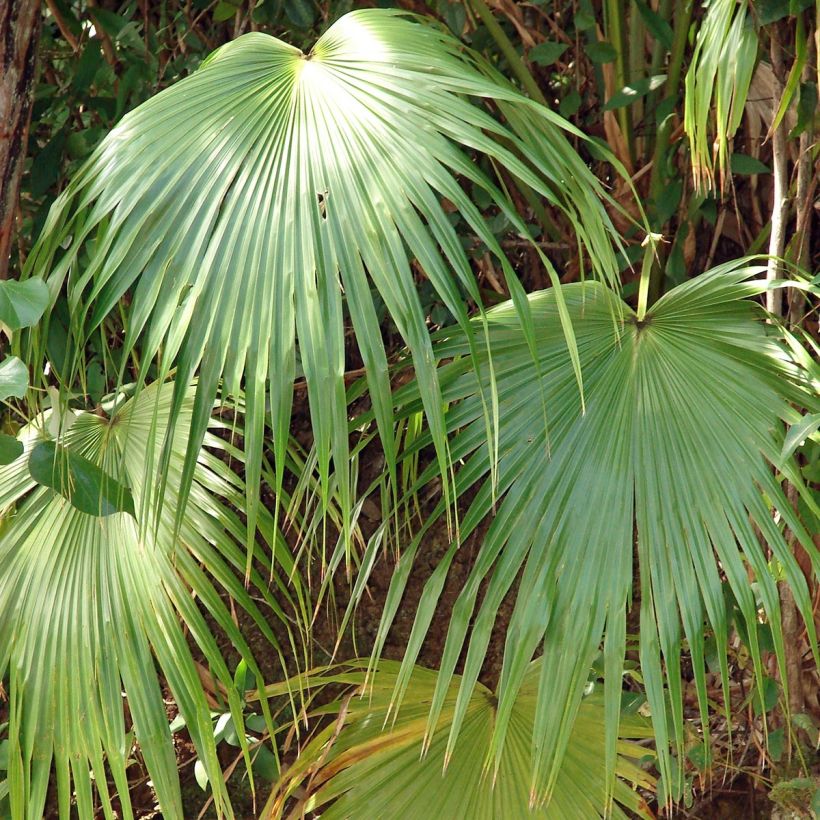

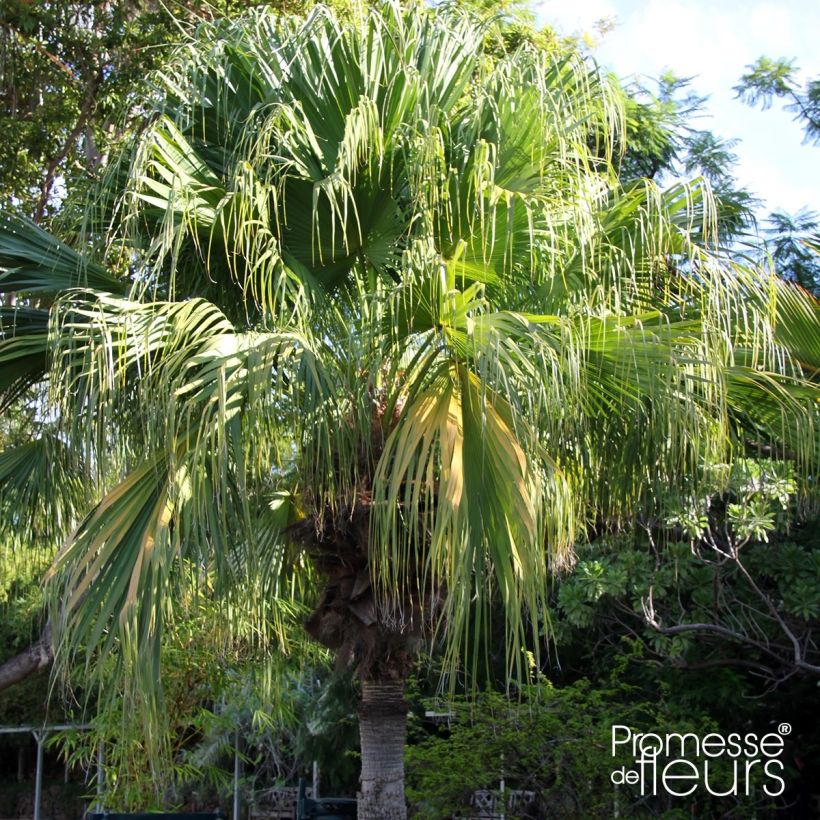

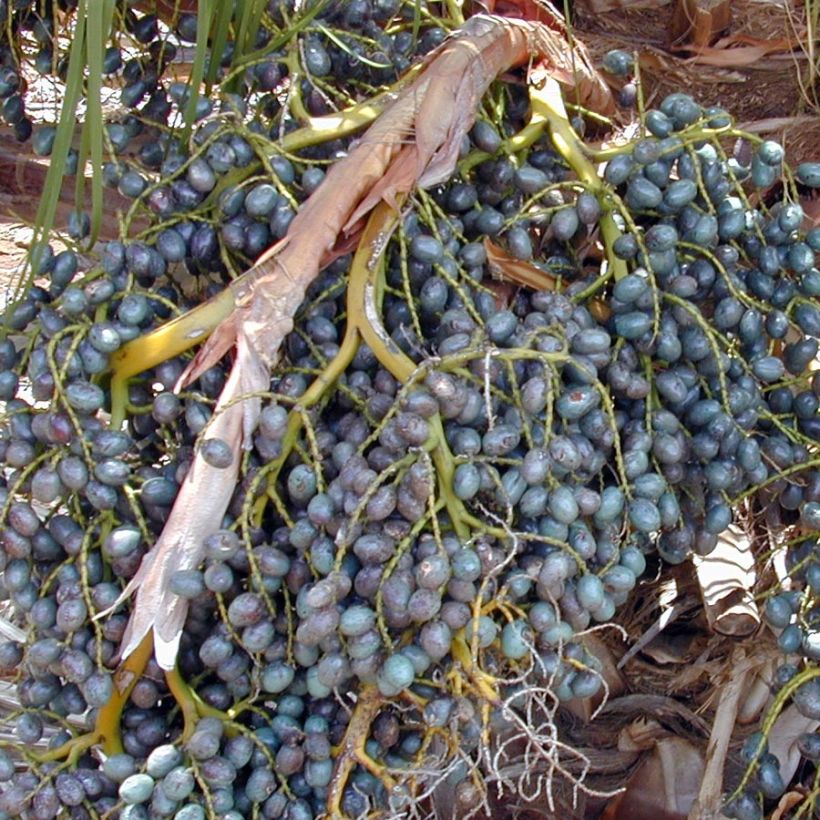

Plant habit
Flowering
Foliage
Botanical data
Livistona
chinensis
Arecaceae
Chinese Fan Palm, Fountain Palm
China
Planting and care
Livistona chinensis has fairly rapid growth, especially when regularly watered in a hot climate. It dislikes the cold, especially young subjects that will need to be protected from frost on a veranda or in a greenhouse. Mature plants can withstand brief freezes of around -8°C (17.6 °F). Choose a sunny exposure, sheltered from the wind. It can be cultivated in a large pot to overwinter, outside coastal regions. It should be protected in case of expected cold weather by tightly binding the crown of leaves to protect the plant's core. Young subjects appreciate partial shade, while older plants tolerate full sun. This palm is not demanding in terms of soil, as long as it is deep, well-prepared, and well-tilled. While it prefers fresh soil, it can still tolerate periods of moderate drought. In hotter regions, it should be watered deeply from time to time during summer. It requires little maintenance except for pruning the oldest fronds close to the stem.
Pot cultivation:
Choose a very large pot or container with drainage holes and a capacity of 75 to 100 litres. Prepare a mixture composed of 50% loam soil, 25% compost, and 25% sand. Mix well. Partially fill your container, after placing a drainage layer at the bottom (clay balls, gravel, broken terracotta pots, etc.). Place your palm on the mixture, ensuring that the collar (the area where the roots originate) does not exceed the pot but is not buried too deep under the substrate either. Add the remaining mixture around the root ball, firmly tamp down. Water in multiple stages to thoroughly saturate the substrate and remove air pockets. Place your palm in a very bright location, avoiding direct sunlight. Outdoors, place it in partial shade, avoiding full sun that can scorch the foliage. After two weeks in partial shade, you can gradually expose it to the sun. In winter, it can be placed in an unheated room, in filtered light, in a greenhouse, or on a veranda. Spray the foliage occasionally and reduce watering. Apply organic fertilizer or compost in spring.
Diseases and pests:
In some areas, large palm trees are susceptible to parasites such as the dreaded and widespread Paysandra archon moth, which extends as far as England. Specific treatments are now available as a preventive measure. The red palm weevil (Rhynchophorus ferrugineus) has been present since 2006. The symptoms include fronds that are cut, dried, or turning yellow. These pests attack many palm species, with a fatal outcome: the leaves irreversibly and completely wither as soon as the core of the stem harbours larvae.
Planting period
Intended location
Care
Planting & care advice
-
, onOrder confirmed
Reply from on Promesse de fleurs
Similar products
Haven't found what you were looking for?
Hardiness is the lowest winter temperature a plant can endure without suffering serious damage or even dying. However, hardiness is affected by location (a sheltered area, such as a patio), protection (winter cover) and soil type (hardiness is improved by well-drained soil).

Photo Sharing Terms & Conditions
In order to encourage gardeners to interact and share their experiences, Promesse de fleurs offers various media enabling content to be uploaded onto its Site - in particular via the ‘Photo sharing’ module.
The User agrees to refrain from:
- Posting any content that is illegal, prejudicial, insulting, racist, inciteful to hatred, revisionist, contrary to public decency, that infringes on privacy or on the privacy rights of third parties, in particular the publicity rights of persons and goods, intellectual property rights, or the right to privacy.
- Submitting content on behalf of a third party;
- Impersonate the identity of a third party and/or publish any personal information about a third party;
In general, the User undertakes to refrain from any unethical behaviour.
All Content (in particular text, comments, files, images, photos, videos, creative works, etc.), which may be subject to property or intellectual property rights, image or other private rights, shall remain the property of the User, subject to the limited rights granted by the terms of the licence granted by Promesse de fleurs as stated below. Users are at liberty to publish or not to publish such Content on the Site, notably via the ‘Photo Sharing’ facility, and accept that this Content shall be made public and freely accessible, notably on the Internet.
Users further acknowledge, undertake to have ,and guarantee that they hold all necessary rights and permissions to publish such material on the Site, in particular with regard to the legislation in force pertaining to any privacy, property, intellectual property, image, or contractual rights, or rights of any other nature. By publishing such Content on the Site, Users acknowledge accepting full liability as publishers of the Content within the meaning of the law, and grant Promesse de fleurs, free of charge, an inclusive, worldwide licence for the said Content for the entire duration of its publication, including all reproduction, representation, up/downloading, displaying, performing, transmission, and storage rights.
Users also grant permission for their name to be linked to the Content and accept that this link may not always be made available.
By engaging in posting material, Users consent to their Content becoming automatically accessible on the Internet, in particular on other sites and/or blogs and/or web pages of the Promesse de fleurs site, including in particular social pages and the Promesse de fleurs catalogue.
Users may secure the removal of entrusted content free of charge by issuing a simple request via our contact form.
The flowering period indicated on our website applies to countries and regions located in USDA zone 8 (France, the United Kingdom, Ireland, the Netherlands, etc.)
It will vary according to where you live:
- In zones 9 to 10 (Italy, Spain, Greece, etc.), flowering will occur about 2 to 4 weeks earlier.
- In zones 6 to 7 (Germany, Poland, Slovenia, and lower mountainous regions), flowering will be delayed by 2 to 3 weeks.
- In zone 5 (Central Europe, Scandinavia), blooming will be delayed by 3 to 5 weeks.
In temperate climates, pruning of spring-flowering shrubs (forsythia, spireas, etc.) should be done just after flowering.
Pruning of summer-flowering shrubs (Indian Lilac, Perovskia, etc.) can be done in winter or spring.
In cold regions as well as with frost-sensitive plants, avoid pruning too early when severe frosts may still occur.
The planting period indicated on our website applies to countries and regions located in USDA zone 8 (France, United Kingdom, Ireland, Netherlands).
It will vary according to where you live:
- In Mediterranean zones (Marseille, Madrid, Milan, etc.), autumn and winter are the best planting periods.
- In continental zones (Strasbourg, Munich, Vienna, etc.), delay planting by 2 to 3 weeks in spring and bring it forward by 2 to 4 weeks in autumn.
- In mountainous regions (the Alps, Pyrenees, Carpathians, etc.), it is best to plant in late spring (May-June) or late summer (August-September).
The harvesting period indicated on our website applies to countries and regions in USDA zone 8 (France, England, Ireland, the Netherlands).
In colder areas (Scandinavia, Poland, Austria...) fruit and vegetable harvests are likely to be delayed by 3-4 weeks.
In warmer areas (Italy, Spain, Greece, etc.), harvesting will probably take place earlier, depending on weather conditions.
The sowing periods indicated on our website apply to countries and regions within USDA Zone 8 (France, UK, Ireland, Netherlands).
In colder areas (Scandinavia, Poland, Austria...), delay any outdoor sowing by 3-4 weeks, or sow under glass.
In warmer climes (Italy, Spain, Greece, etc.), bring outdoor sowing forward by a few weeks.






























